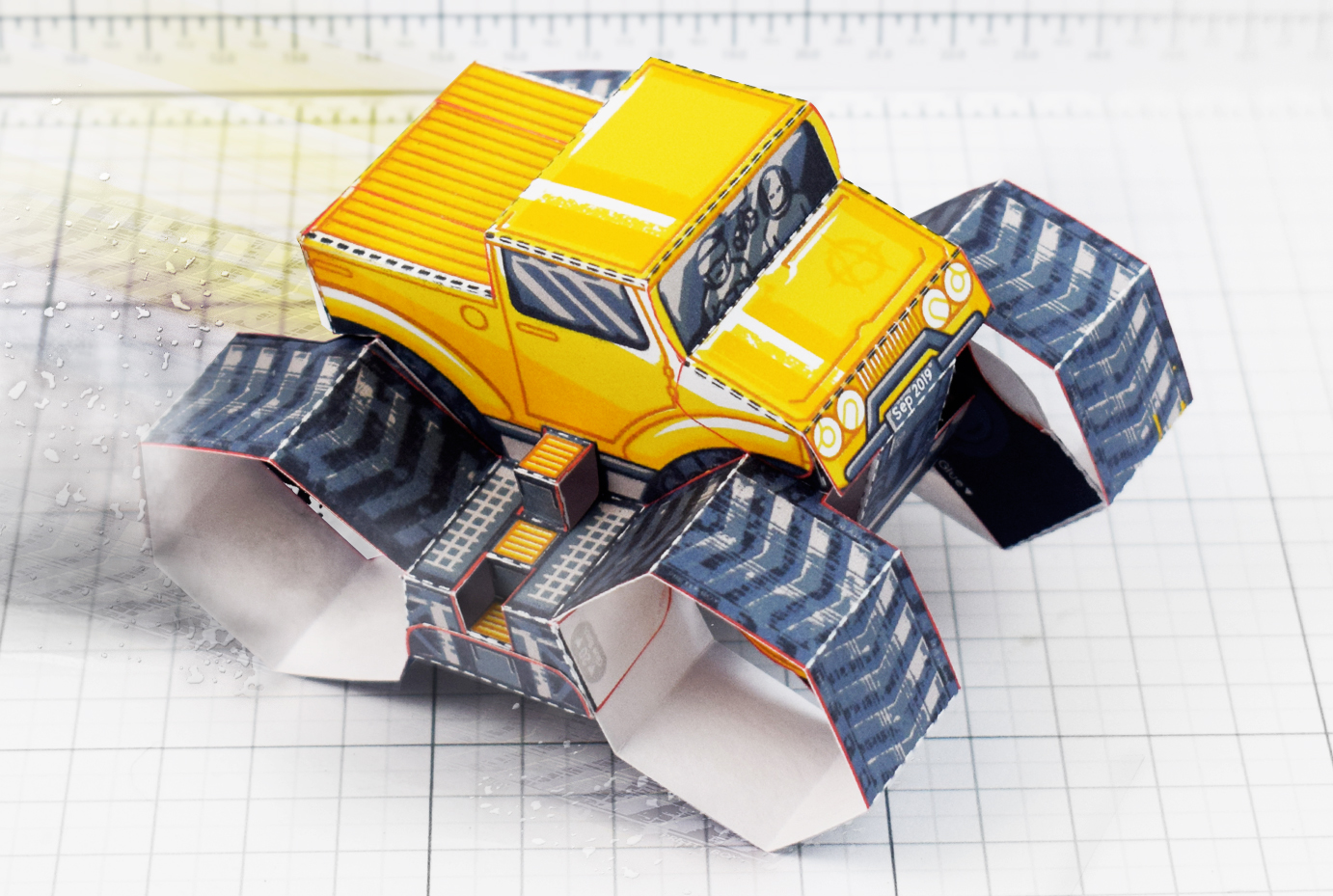Today we’re talking to Alex Gwynne from Fold Up Toys. Being relegated to half of a small home office during the coronavirus pandemic hasn’t stopped her creativity, sharing design processes and build videos on the YouTube channel Lost In The Fold.
Check out the full interview below, and be sure to visit Alex’s Fold Up Toys website to download, print, and assemble some of these incredible models yourself!
Tell us about yourself! What do you make?

My name is Alex Gwynne, I’m a graphic designer and paper engineer and I make paper toys. Paper toys are 2D, printable nets that can be cut out and folded together to make 3D shapes, often of characters or creatures.
I don’t use any 3D software, instead I rely on traditional paper engineering techniques, designing the models as flat graphics.
How long have you been doing your craft? Who taught you or where did you learn?
I’ve been designing paper toys for over 10 years. I first discovered paper crafts whilst I was working on my final art exam in secondary school.
I wanted to make some urban vinyl toys, but I couldn’t afford the clay to sculpt my designs or the silicon to make the moulds. Whilst I was researching I stumbled across a picture of a box with a face and thought ‘I can afford paper’.
I’ve been folding projects ever since!
Tell us about your tiny workshop

My workshop is a little room in my little flat. It’s 2.5m x 3.5m (ed: ~8ft x 11.5ft), and has to house both myself and my other half since they now have to work from home throughout the lockdown, what was once my photo area is now their desk.
The office is so small that if we both turn our chairs at the same time they hit one another.
The window was installed backwards, so when it rains, the seal slowly fills up with water before it sprays into the room and I have to move everything out of the danger zone.
What tools are most important to your work?
The great thing about getting into paper crafts is that there’s a relatively low barrier for entry. All I use to make the models is a printer, some card stock, a pair of scissors, some PVA glue, and an old brush to apply it.
To design my models I use Adobe illustrator to create the nets and then texture them using Photoshop.
Although I do have some fancy tools like a duel headed cutting machine, I find that I only use those in very specific circumstances, such as a commission project intended to be die-cut.
Any advice for beginners to your craft?

The best way to get kind of sort of good at something is to accept that you’ll be kind of sort of bad at it at first. Getting into paper crafts is really easy and there’s hundreds of simple beginner models available for free online.
Try printing out what other people have created to see how things work and then modify, adjust, and create your own designs from there.
Who inspires you?
Paper toys designers like Marshall Alexander and Matt Hawkins have been infinitely inspirational.
Marshall’s toys focused on the paper engineering side of things, trying to keep the paper toy as a single piece, even if that required extra steps in its construction. Matt’s designs are so lively and energetic they feel like they’re going to jump off of the page and make themselves.
Where can people find your work?
I have a bunch of models available to download for free as well as a patreon where I share my more advanced models at folduptoys.com.
You can follow me on Twitter for my hot takes about how to fold paper @folduptoys and I have a YouTube channel where I share my design process called Lost In The Fold. Currently I’m uploading more laid back content as the office is being shared, building toys in my ‘Corona corner’.






Leave a Reply